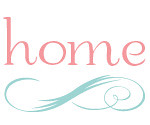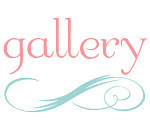[IMAGE]
What makes plique-à-jour enamels so unique and in demand by collectors?
- RARITY - There is an extremely small number of skilled artists who have perfected the art of plique-a-jour enameling. There are no others, to my knowledge, who have adapted it for use in miniature stained glass applications for the dollhouse or architectural projects in standard mini scales, such as 1:12, 1:24, and 1:48.
- DIFFICULTY - Few artists are able to master the skills necessary to succeed at this enameling technique, which incorporate not only the skills of a jeweler, including the construction of fine filigree forms, but also enameling "in air" (that is, with no metal backing).
- BEAUTY - resemblance to the intricate work of the great artists of the Art Nouveau period - Rene Lalique, Louis Comfort Tiffany, and Peter Carl Faberge.
- ARTIST'S VISION - unique designs and applications as well as artistic alliances as in Bloodwood Door #1 in which artist Gary Goodman executed the wooden door and frame.
- GLASS - colors are permanent, brilliant, translucent, and items resemble miniature stained glass.
- PRECIOUS METALS - fine silver, sterling silver, and/or gold frameworks.
- FRAGILITY - fine ribbons of silver and gold filigree wire support thin layers of glass enamels within their borders.
- VISUAL APPEARANCE - refraction and reflection of light due to absence of metal backing - ground glass is suspended within each tiny frame and fired many times to achieve the tiny panel of thin enamel which spans each cell.
- KILN FIRING - multiple firings yield permanence - the glass actually fuses to the metal when heated in a kiln at very high temperature.
- STRESS - inherent differences in basic attributes of metal and glass and of their joining (stress of expansion/contraction involved in heating and cooling - the "nature of the beast", so to speak). Each piece is quite a miracle!
- TIME- labor intensive - made by hand and may require days, weeks, months, or even years of work on special items. There are no short-cuts in quality work!
- DOLLHOUSE AND ARCHITECTURAL APPLICATIONS - mini stained glass windows, doors, lamps, panels and more! The most realistic way to recreate stained glass items in miniature.
- LIMITED AVAILABILITY - Small number of pieces made.
[IMAGE]
Miniature Stained Glass and Plique-à-Jour Enamels - Who, What, Where, When, and How.....
Hi - I'm Diane Echnoz Almeyda. I'm an enamelist, jeweler, and metalsmith - and I love plique-a-jour enameling, the art of making miniature stained glass. I make vessels, jewelry, objets d'art, and miniature stained glass windows and lamps for dollhouses and architectural models in various scales (1:12, 1:24, 1:48) using real glass and metal. I work only with glass (vitreous) enamels and metals - usually silver and gold. I don't use resins, plastics, or paints. Actually, this is my favorite topic of conversation - so I'm glad you're here!
[IMAGE]
How I Got Started with Plique-à-Jour Enameling.
It was love at first sight when I first saw a miniature box incorporating plique-a-jour enameling in the lid. The brilliant colors of the enamels added so much to the metal structure; it simply amazed me.
I knew I had to add color to the silver and gold metalwork I was creating - and this little box convinced me that enameling was the way to do it. There was a delicacy in the glass yet the colors were so brilliant. It was the perfect addition to the metalwork.
Life sometimes has a way of leading us where we need to go - and so it was for me when I saw that my state goldsmiths' group was offering a class in plique-a-jour enameling to be given by a master jeweler from Russia. Well, that was the beginning.....
A little bit of technical information...
Enamel = Glass Fused to Metal
Whether you say enamel, smelzan, esmail, smalto, shippo, emaux, emaille, email, or esmalta you're still discussing the same subject - glass fused to metal, the technical definition of enamel!
Just what is plique-à-jour?
The Dictionary of Enamelling by Erika Speel (ISBN 1-85928-272-5) defines Plique-a-Jour as "Translucent or Opalescent Enamels fused to span across a network of cells formed with gold, silver, silvered copper, or copper, without a backing under the glazed areas. The fused enamel is an integral part of the finished surface, with the glaze forming a shell veined with metal outlines. Plique-a-jour is seen to best effect when lit strongly from the back. Lacking such illumination the enamels tend to look dense or semi-opaque."
She also states "Plique-a-jour has been in fashion since the late 19th century for jewellery and small decorative articles. Although visually very alluring, plique-a-jour pieces are more fragile than other types of enamel work and require careful handling in use. Making these pieces is more time-consuming than other enamel work and there is a potentially higher failure rate." "Therefore the worth of these pieces resides in the inspirational designs and high quality of craftsmanship rather than in the intrinsic value of the metal base."
[IMAGE]
How are plique-à-jour enamels made?
There are three basic ways of creating plique-a-jour:
1: Filigree plique-a-jour: This is a building up process whereby a planned design is interpreted using gold or silver wires which are worked over a metal form (i.e. bowl). The wires are soldered together. Enamels are ground and applied to each "cell" created by the metal wirework. The piece is fired in a kiln. This process of placing and firing the enamels is repeated until all cells are completely filled.
2: Pierced plique-a-jour: A sheet of gold or silver is pierced and sawed, cutting out a desired design. This leaves empty spaces or "cells" to fill with enamel powders (ground glass) as described above.
3: Japanese plique-a-jour (Shotai shippo): A layer of flux (clear enamel) is fired over a copper form. Wires are fired onto the flux (similar to cloisonné) and the resulting areas are enameled in the colors of choice. When all the enameling is finished, the copper base is etched away leaving a translucent shell of plique-a-jour.
[IMAGE]
The Past.
Plique-a-jour enameling saw its heyday in the latter part of the 1800s and early 1900s primarily in Austria, France, Japan, Norway, and the United States.
It incorporated the Art Nouveau ideals seen in works of artists such as Rene Lalique whereby precious and common items were used together to create incredible works of art based mainly on the vision of the artist and skill of the artisan.
Plique-a-jour was a very secret process which makes it difficult to learn about this ancient technique.
My Work.
I have been using the first two techniques described above for my own work - those of filigree and piercing - as they allow a "finished" and clear surface on the fired enamels.
While I have been making both two and three dimensional plique-a-jour vessels, jewelry, and objets d'art for many years, my latest research and developments have led me to successfully re-create stained glass windows and lamps into miniature for dollhouses and architectural projects in various mini scales (i.e. 1:12, 1:24, 1:48).
Today and the Future.
This is an exciting field, filled with challenges which keep me constantly thinking about how I can somehow try to tame these two diverse materials - metals (silver and gold) and glass. I do remember the words of my teacher telling me that one needs to work with the materials - not against them. Now, there' s a challenge!
That serendipitous beginning has brought me to where I am today - a respected authority in my field. I am always looking for ways to expand on my craft by experimentation and by continuing to learn from artists in other specialties. My work is in demand and is in numerous private collections. I teach at schools of art and craft, at professional conferences, as well as at private classes. Each finished piece reinforces the need to continue and grow - to stretch the boundaries and break through the barriers. It is what drives me - my passion, my life.
I hope you find this art form as exciting and beautiful as I do. Please enjoy the photos in my gallery and read about upcoming classes and shows on the Schedule page. Please use the contact form to send any questions or comments you may have. Thank you.
[IMAGE]
Publications
- "Dollhouse Miniatures", December 2007 (lighting article)
- "Best of America Glass Artists & Artisans Vol 1, 2007 Kennedy Publishing
- "Best of Florida Artists & Artisans 2006 Kennedy Publishing
- "American Miniaturist", August 2006, No 40
- "Dolls House and Miniature Scene", July 2006, No 145
- "Miniaturas - Construcción & Coleccionismo", Año 11, No 102, February 2006
- The Art of Enameling (Techniques, Projects, Inspiration)
by Linda Darty, Copyright 2004, ISBN 1-57990-507-2 - Art Jewelry Today by Dona Z. Meilach, Copyright 2003,
ISBN 0-7643-1766-0 - "Lapidary Journal", December 2002
- "ArtSpirit Magazine", Winter 2002
- The Art of Fine Enameling by Karen L. Cohen, Copyright
2002, ISBN 0-8069-7869-4 - "American Style" magazine, Fall 2002
- Object Lessons (Original Art from Guild Artists), Copyright
2001, ISBN 1-893164-11-X - "Glass on Metal" Enamelist Society Magazine, Volume
20, No. 3, June 2001 - "Metalsmith" Society of North American Goldsmiths
Magazine, Volume 20, No. 4, Exhibition in Print 2000 - "ArtCrowd" Magazine, Spring 2000
Professional Affiliations
- Enamel Guild South (EGS)
- The Enamelist Society
- Florida Craftsmen
- Florida Society of Goldsmiths (FSG)
- International Guild of Miniature Artisans (IGMA) "Artisan"
Instructors, Mentors, and All-Around Very Important
People in my Metal/Enamel Education
Pete Acquisto, Donna Buchwald, Mary Chuduk, John Cogswell, Chuck Dolgos, Shirley Drevich, Tom Ellis, Ricky Frank, Bill Helwig, Cathy Holt, Lynne Hull, Charles Lewton-Brain, Betty Helen Longhi, Philippe Moutardier, Tom Muir, Komelia O'Kim, Sarah Perkins, David Pimentel, Merry Lee Rae, Fay Rooke, John Satterfield, Jean Stark, Lori Talcott, Rachelle Thiewes, Valeri Timofeev, Susan Wood, and Valentin Yotkov.
A very special thank-you to Valeri Timofeev - for sharing his world of plique-a-jour.






